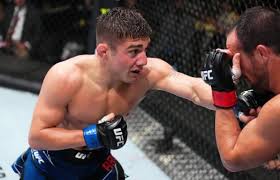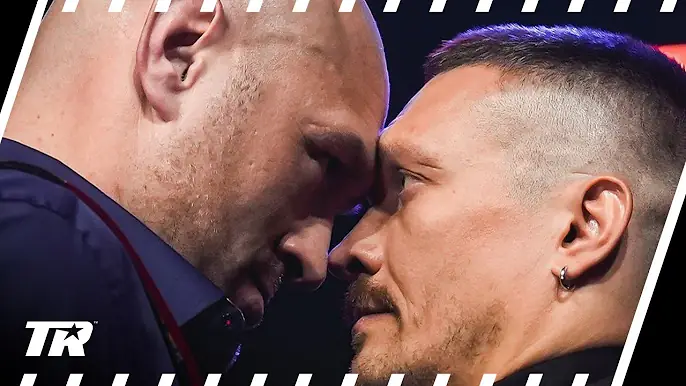The Science Of Wrestling Moves: How WWE Superstars Execute Them Safely
Professional wrestling in WWE is this exciting combination of sports, entertainment, and storytelling. Bodies flying in the air, the loud beat of flesh on flesh, the grueling human interaction—it brings awe to the eyes of fans around the world who witness this event. But beneath all this glittering pageantry, in effect, is an unimaginable regime of safety and finesse. Very deep, this article gets into the science of wrestling moves to show how WWE superstars safely do their actions while performing to a great magnitude.
The Basics of Wrestling Safety
Although the matches are predetermined, the physical aspect of wrestling and its danger are authentic. The WWE superstars train extensively to add to the list of safely performed stunts. This comes as a combination of several factors in their training:
Physical Conditioning: Professional wrestlers stay in top physical shape to tolerate the rigors of their craft. Strength, flexibility, and cardiovascular conditioning are essential to prevent injuries and enhance performance.
Skills Training: Mechanics of the move must be downloaded into your mind. Wrestlers practice in practical, controlled situations to master techniques. Techniques are then possible to perform effectively and safely.
Ring Awareness: Know the size and structure of a wrestling ring; to never get in harm’s way during contests, a wrestler develops ring awareness.
Communication: In wrestling, effective communication is everything. Verbal and nonverbal cues are devised between wrestlers while they work through a match to ensure mutual protection.
The Anatomy of a Wrestling Move
Appreciating the science behind wrestling moves demands the breaking down of their constituents. Leverage, momentum, and controlled impact are combined in most moves.
This is also seen in applying leverage, where wrestlers use their bodies to make the moves with the least effort and the most effect. That is, during a suplex, the wrestler uses the legs and core of the body to lift the opponent instead of straining the back.
Momentum
Efficiently using the potential of momentum allows wrestlers to execute energetic moves with minimal effort. One such move is the Irish whip, which would harness the opponent’s potential to get propelled into the ropes, leading to dramatic propulsion with caged effort.
Controlled Impact
Every wrestler moves so that it reduces actual impact while bringing out the spirit of force. The wrestlers fall back on the flats or other big muscle groups to spread out the effect and hence reduce the injury rate. Besides, the shock given would be less because most of it is absorbed by the mat with its padding and spring action boards.
Acrobatics
Among some of the most stunning and high-risk wrestling techniques are moves that involve dives and flips. Sure, performing those types of moves requires skill, timing, and coordination that resonate perfectly.
Training and Technique:
High flyers like Rey Mysterio and Ricochet perform much practice to perfect their moves regarding aerial maneuvers. They train with the assistance of crash mats, helping support other safety-related tasks to prepare confidence and competence.
Core:
Aerial maneuvers require immense body control. A lot of them involve the wrestler just spin and turning his body acutely in the air while landing. Their core and balance must be on point to pull off these moves perfectly.
Timing and Coordination:
Timing is perfect, as high-risk moves barely dodge or evade possible contact while coordinated with opponents. Such doing requires a rhythmic flow of both wrestlers making the move, as clearly shown convincingly and perfectly done without causing harm to both performers convincingly. Communications.
Example: The Moonsault
A moonsault is a backflip performed from the top rope, frequently landing on a prone opponent. To execute this move, a wrestler must be launched off the rope with enough height and rotation so that the flip—after that —will complete and land safely on the opponent, who helps absorb and distribute the impact.
Power Moves and Slams
Power moves and slams, generally in the form of a powerbomb or suplex, show strength and technique. These can look pretty brutal but are very controlled to make sure both performers avoid injury.
Lifting Techniques:
Proper lifting technique is also vital in preventing injury. Wrestlers use their legs and core muscles to lift opponents and thus avoid putting too much strain on the back muscles. In both these lifts, performers often do much of the work themselves; in other words, the person getting lifted somehow jumps or hits their body.
Controlled Descent:
Being very aware of how to control the landing is essential in slams. The target of wrestlers during the landing is the large muscle groups: back, buttocks, and the like, to disperse the impact. One executing the move must ensure the opponent lands flat to prevent injury.
Example: The Powerbomb
During a powerbomb, the performer lifts their opponent onto their shoulders and then drives down into the mat. The opponent tucks his chin and spreads his body to absorb the impact safely as the performer guides him to the ground.
Final Steps
Submission moves, which involve joint locks and holds, have to be applied with precision so as neither to cause actual harm to the opponent nor diminish the move’s convincing appearance.
Wrestlers lock in their submission holds and exhibit controlled pressure on joints and muscles. They utilize positioning and leverage to bring about the sensation of pain or pressure, as opposed to flat pushing that pain through with muscle power.
Give a Human Touch: Submission moves rely heavily on a lot of communication and trust. The performer administering the hold should read how comfortable his opponent is and ease off if necessary. Opponents indicate if the hold isn’t correct in the case of tightness and discomfort.
Example: The Sharpshooter
A sunshine flip, on the other hand, is a leg submission move where one of the performers crosses the lower back of their opponent via the set of legs being crossed together. Hence, when one performs this move during wrestling, they have to check so keenly on where the opponent’s exact legs and back are because anything could go wrong and causally or slowly bring a genuine injury.
Strikes and ramming moves
All these are part of wrestling: punches and kicks with all kinds of chops. All have to be delivered precisely, technically, so it is full of impact but does not hurt.
Failures to Pitch
Wrestlers do pull strikes, where they can pull back at the last second to minimize real impact. They use physical body language and impact sound effects, say stomping the mat, to better sell the visuals and sounds of the effects.
Safe Contact Points
The safest part of the body to strike: the chest and upper back. Wrestlers work at striking those areas to practice reducing the effects of an opponent’s strikes. Hitting the head or the neck is generally avoided at all costs and performed carefully when no alternative exists.
Example: The Superkick
The superkick is a move where the wrestler drives a high kick into the face of an opponent in which they pull the kick, so in reality, little contact is made. An opponent would sell the move over-reacting as though they are very hurt to make it seem like a devastating blow just landed.
The Role of the Wrestling Ring:
The wrestling ring is designed with safety in mind. It consists mainly of layers that absorb and distribute force.
Carpets and Underlay
The ring mat is made of canvas with foam underneath it, so, therefore, it’s kind of of really soft. This padding makes amends for the slap one will never fail to receive lying on the mat after flipping some rounds.
Spring boards
Under the padding is the wooden board, sprung using springs that give the ring a bit of flexibility and a bit of shock absorbency again, helping minimize injuries from high-impact moves.
Ropes and Turnbuckles
The ropes and turnbuckle are made with pad covering to soften the impact. Now, ropes provide protection against injuries for the wrestlers. They are primarily used in the Irish whip, or some springboard moves rely on the elasticity and padding of the ropes for the performer’s safety.
Continuous Improvement and Safety Measures:
WWE always works towards the betterment of measures for the safety of talent. These involve systematic medical observations, guidelines for appropriately addressing concussions, and further training.
Medical Assessments
The Wrestlers are summoned for subsequent check-ups and declared to be acceptable for the show. WWE inculcated one more wellness scheme to ensure general mental and physical wellness.
Concussion Protocols
Given the physical nature of wrestling, concussions are a concern. WWE has strict protocols in place regarding the diagnosis and management of such concussions, which may include mandatory rest periods and required medical clearance before results can be returned to action.
Continuing education
Wrestlers are always honing skills by attending regular training sessions. Practice makes one perfect, and the WWE’s Performance Center is one of a kind in facilities and coaching.
Conclusion
Safety Art and Science in Wrestling The WWE is one place where athleticism, performance skills, and safety concerns blend charmingly. Wrestlers may be professionals in this game to make the competition enjoyable for all manner of audiences, but with their acquired skills, they manage to minimize the risk of an injury occurring. Knowing the science behind some of the wrestling moves helps to realize what exactly it takes to perform at the highest level. From those high-flying heroic maneuvers to the vicious vaunted submission holds, everything in wrestling is predetermined. It’s ensured that, in WWE, the champions are always trained amidst very stringent protocols, and this centuries-old form of professional wrestling is staged for the fans worldwide for the safety of its superstars. It is an artistic view of things that is not only within the parameters of wrestling but also drama play, with larger-than-life characters and detailed, painstaking attention paid to safety. It is this amalgamation of both arts and sciences that helps make WWE a unique and long-term form of entertainment.



















